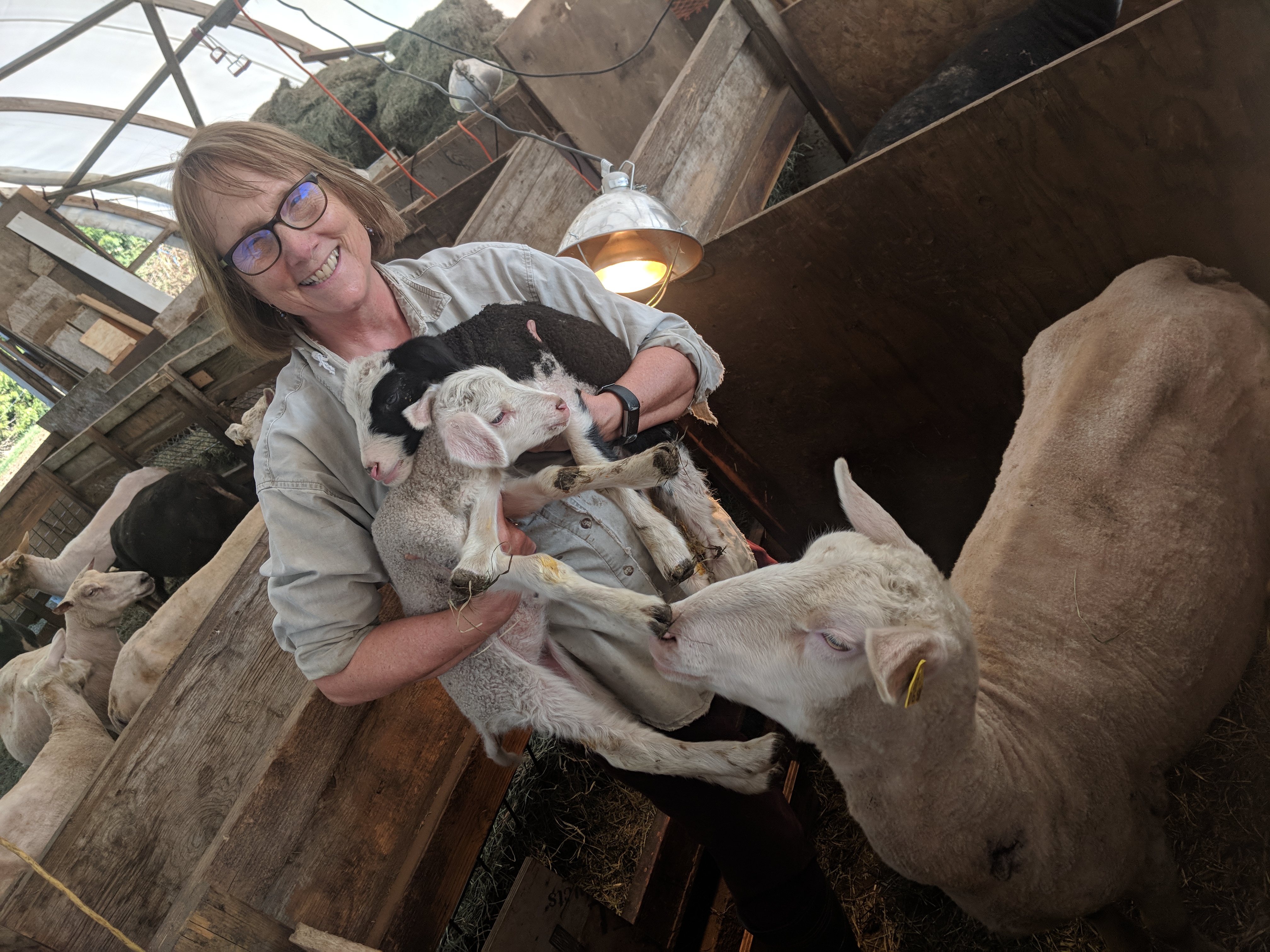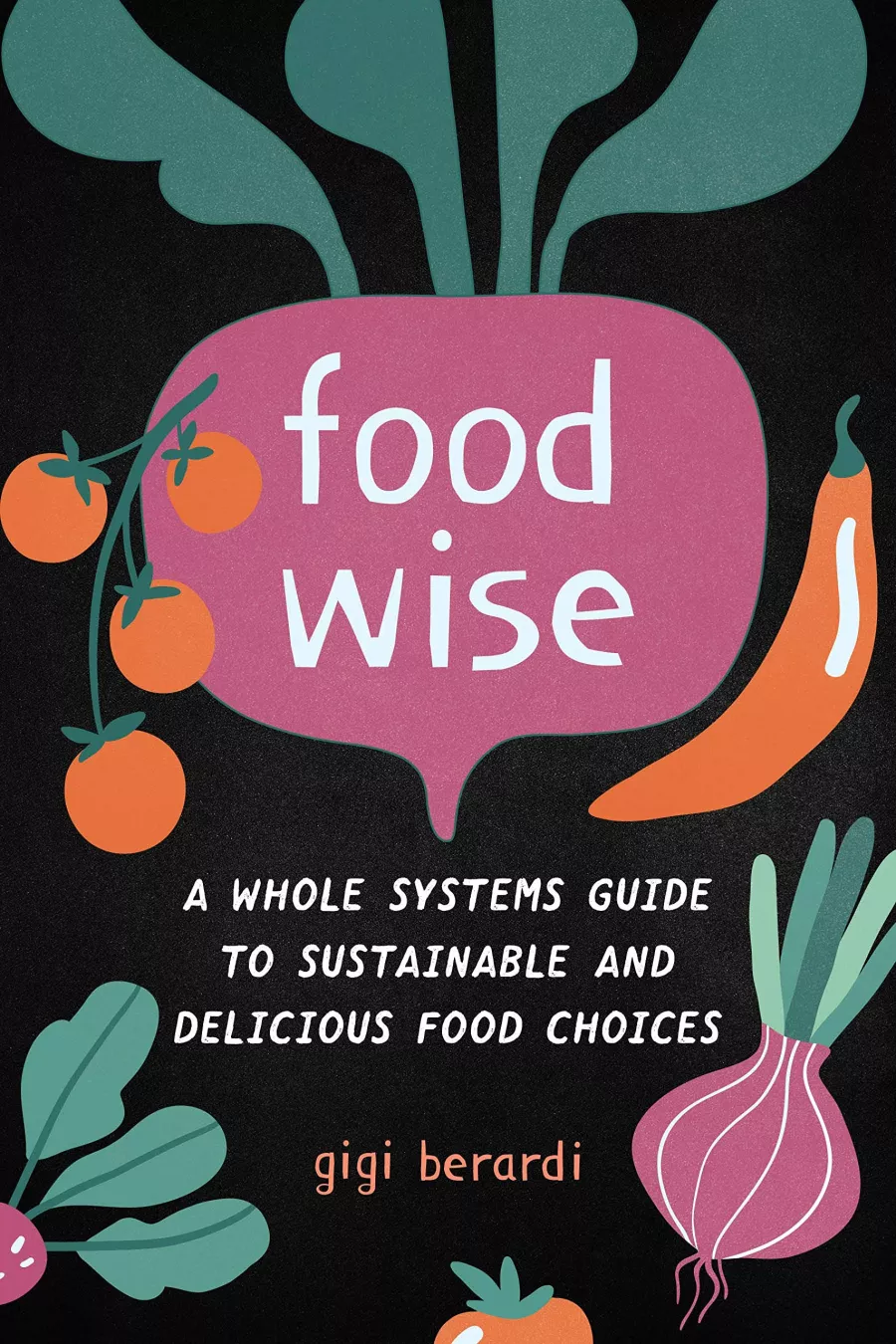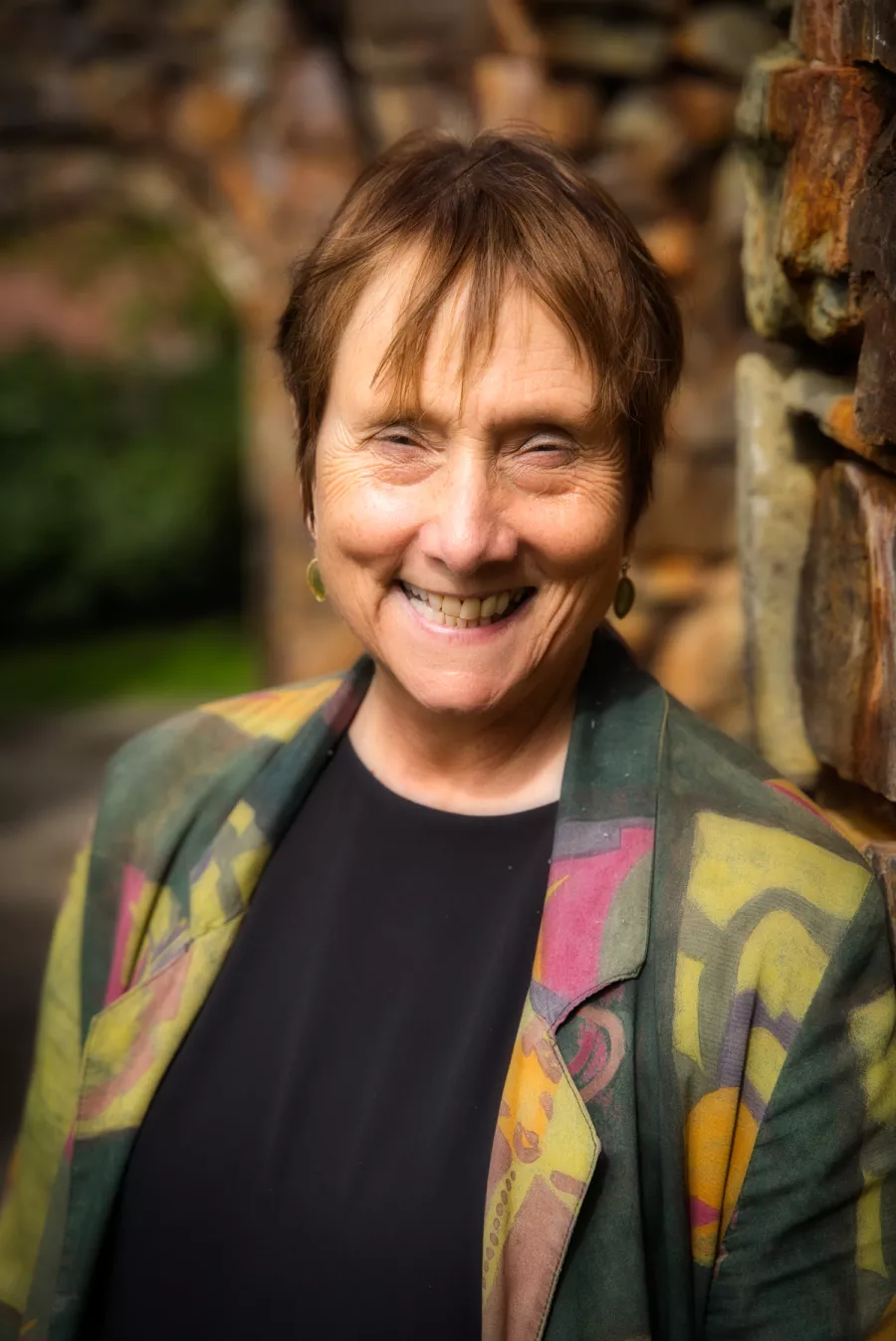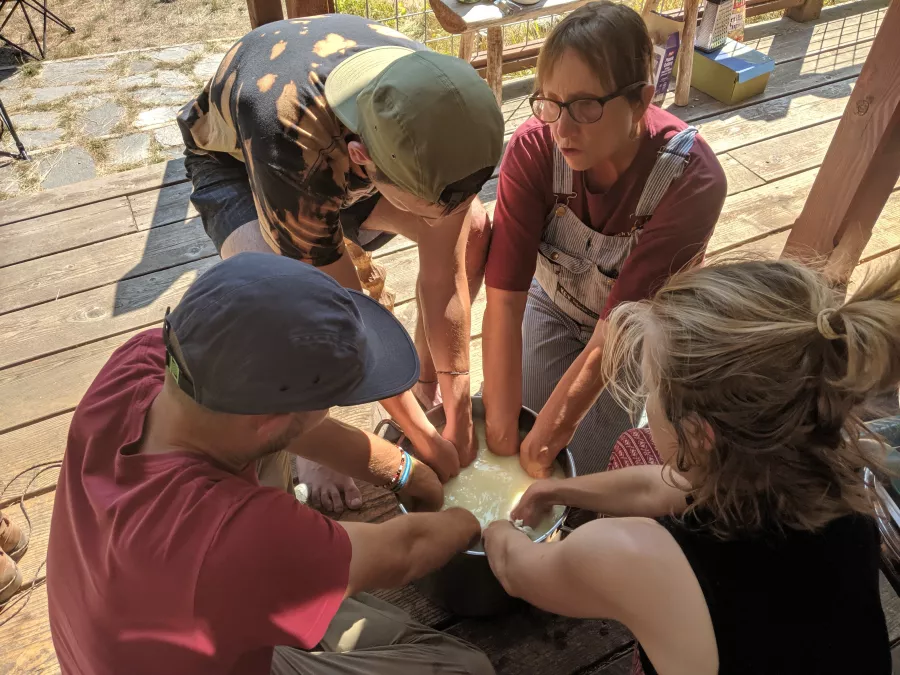Gigi Berardi still remembers the visual wonder of the orderly rows and captivatingly colored packages—including her favorite Pop Tarts—in the new Von’s grocery store when it opened in Burbank, California. But the more her family visited the modern, convenient store, the less they stopped by the local Italian deli and the drive-through outlets of their favorite dairy farm in Altadena.
Her family’s choices in how to feed themselves had consequences far beyond the meals they made, such as her mother’s lasagna or her father’s vermicelli with anchovies, and Berardi, now a professor of environmental studies at Huxley College of the Environment, has spent much of her life studying, enjoying and thinking deeply about food and food systems.
Now she’s sharing what she’s learned with the rest of us in “FoodWISE: A Whole Systems Guide to Sustainable and Delicious Food Choices,” published earlier this year by North Atlantic Books. In the book, she encourages us to put foods on the table that are Whole, Informed, Sustainable and Experienced—with friends and family.
Window magazine writer John Thompson recently chatted with Berardi, who spends part of her summer on her family’s sheep farm in the San Juan Islands, about the well-received book.
John Thompson: What prompted you to write Food WISE?
Gigi Berardi: My main motivation (or, should I say, inspiration) for writing “FoodWISE” was students! For decades, I’ve been watching students struggle with questions around what’s the “right” food to eat? What’s the best choice for “sustainability,” for “food justice?” What’s the deal with quinoa—it’s high in protein, but what about the land grabs associated with its production? And, if we care about honeybee populations, do we really want to eat almonds? So, I wanted to write a book that presented a systematic way of looking at food choices—the choices piece is important. The book is not so much about food as it is about food choices. And then, from the production and processing side, how do we get everybody talking to each other? Literally, at the same table.
Your research interests blend environmental studies and the arts … how did you get into food as a point of study?
I grew up in what I would call a “food-centered household.” Food was key to everything we did. Even now, a meeting (even a course, dare I say it) without food is just an email! Food was almost a language in my Italian-oriented family, and we did speak it well! So, every Sunday night, we’d have huge Italian dinners, representing days of cooking and hours of eating—all with family and friends. That was my normal.
Professionally, my interests in food started with a year abroad at the University of Sussex right outside London, in Brighton, England in the 1970s. I was studying biology during very heady times in world food and oil circles, and food activism was big. From there, I went to graduate school at Cornell University and co-founded the Coalition for the Right to Eat, and focused my research on energy inputs in food systems. I lived with old-order Amish farmers and researched something that was just starting to be called “organic agriculture” by academics, then I studied soils and did my doctorate on dairy farmers struggling economically with poor soils and low prices. Next, I had an “environmental Fulbright”—there were only two in Europe that year, one in France and one in Italy. I chose Italy, and as a result my Italian got a lot better, which is what I need to teach my global-learning programs there each summer. I published on pesticide contamination and energy use in Italian foods (in BioScience, and elsewhere), and then continued to work on food and food systems throughout my academic career.
As the world’s population continues to grow and climate change alters established growing areas and patterns of agriculture, how does HOW our food is grown become more and more important?
How our food is grown is utterly critical to leading a wise and rich life in a socially and economically just world. Knowledge is power and experience is wisdom—and we need both. I don’t want to trivialize all world environmental problems by describing a solution in one word, but I’m going to try: Whole. What we need are whole-food systems, where ingredients are whole and fertility is integrated and pegged to plant needs. The “whole” farm, as I discuss in the book, “produces crops and livestock, recycles wastes, regenerates resources, and connects to consumers.” “Whole” gives us sustainability and, importantly, resilience. Resilient food systems are able to withstand political and economic threats by building adaptive capacity. Until that happens, there is little hope for an economically just world in which nutritious food choices are possible.
As I write in “FoodWISE,” “Maybe if we can figure out the right choices for ourselves, we’ll gain the power to change our whole lives just through our food.” Climate change adaptation is part of that. But really, the “recipe” for whole farming—more integrated farming (plants, animals) and on a nonindustrial scale—gets us there.
So much of what we eat tends to be sort of compartmentalized into whatever diet, formal or informal, we are currently on … how important is it to break out of that line of thinking?
It's the fierce food beliefs we cling to that guide our food choices into what could be construed as a diet. This is what gives us, in part, a plethora of low-fat, processed foods that seem like "healthy" food options. Breaking free from this line of thinking is tantamount to embracing the FoodWISE approach. Whole, informed, sustainable, experience—little of that is possible with most of the "diets" that are being touted as "healthy" and "good for you." I would suggest that "diet" more broadly speaking, be understood as "way of life." I'm all for ways of life that promote whole foods in whole farming systems. If we value and prioritize that, then FoodWISE thinking is possible.
The reaction to your book has been incredible, from foodies to developmental sociologists to psychologists and even an endorsement from Michael Pollan. How does it feel to have worked so hard on something that is being so universally applauded?
It's quite surprising—and overwhelming and heartwarming all at the same time. I can remember when I first was aware of the publicity. I was giving a departmental seminar on my sabbatical and book project. That spring quarter, I was working 15-18 hours a day editing, when I wasn't teaching or milking sheep. It was an all-consuming process, which I wanted to explain to the department. During the talk, my department chair interrupted to say that the book was for sale on the Target website. Target? Target’s selling it? Even given my strong critical-of-industry stance, with the book only in the editing stage? And at a discounted price? This is all certainly beyond what I've experienced as an academic. I'm glad the book is getting such notice--it's a tribute to Western students (whom I acknowledge throughout the book) and to Pacific Northwest food and farming—all made possible with some financial support from Western. So, in a word, I'm happy. Pleasantly surprised, let's say.
What is WISE?
Berardi’s “WISEST” tips on how all of us can make healthier, more sustainable food choices:
Whole
Minimize your use of processed food. If it's in a package, read the label for the ingredients; try to avoid added chemicals, such as preservatives.
Informed
Identify issues or questions about food that interest you, and, one by one, read and do other research on them until you think you've learned enough to decide how you personally will make food decisions. (Then, stay aware in the future for more information that might change your conclusions.)
Sustainable
Each time you shop, try to buy one or two more foods from local farmers and food producers in your own area. As Bellingham’s Sustainable Connections advocates, Eat Local First.
Experience
Learn how to prepare some new simple dishes and meals from whole ingredients that are easily available to you; find recipes that look good to you.
taSTy
Experiment with different spices and seasonings on dishes you frequently prepare, or different ways of cooking (roasting broccoli or zucchini, say, rather than steaming it); try to find different versions that your family likes, and vary the tastes.



